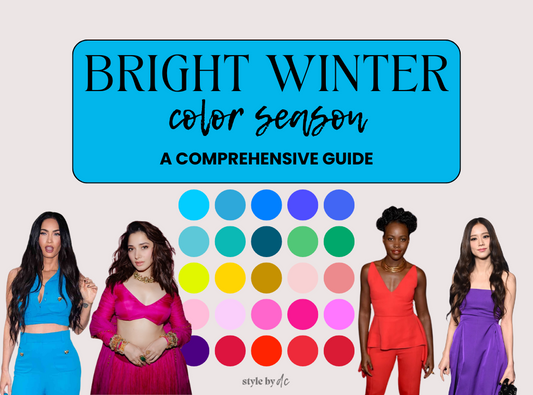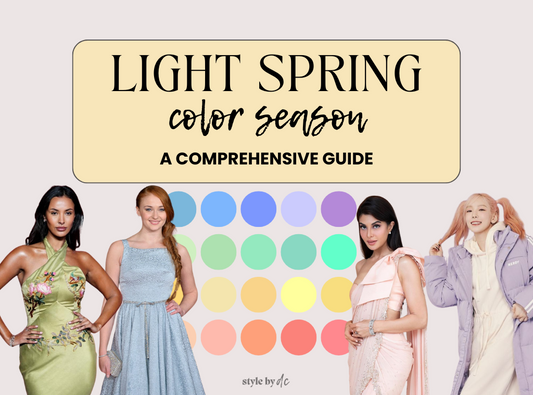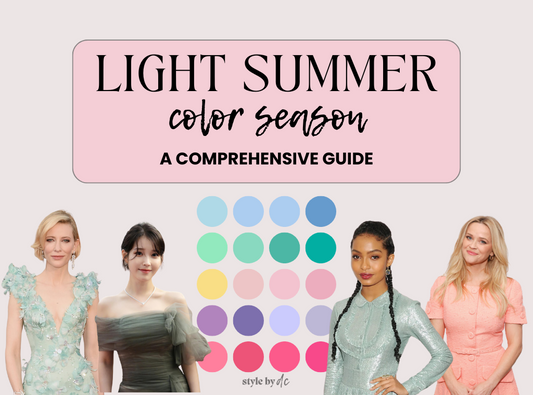Color analysis is the secret behind why some outfits and makeup shades make you look radiant, while others leave you looking dull or washed out. By understanding which colors harmonize with your natural features, you can build a wardrobe and beauty routine that enhances your natural glow.
While professional color analysis services offer the highest level of accuracy, you can begin your journey with a color analysis quiz or a DIY color analysis at home. This guide walks you through the entire process, including the pros and cons of doing it yourself, and when it might be worth seeking professional confirmation.
What is Color Analysis?
Color analysis is the process of determining which color palette compliments your skin tone, hair color, and eye color. The most refined approach is the 16-season system, which expands on the basic four seasons (Spring, Summer, Autumn, Winter) by introducing subcategories based on brightness, softness, and depth.
Pros and Cons of a Color Analysis Quiz or DIY Color Analysis
✅ Pros:
- Budget-Friendly First Step – A great starting point before investing in a professional consultation.
- Convenient – You can do it at home, at your own pace.
- Hands-On Learning – Helps you develop an eye for colors and contrasts.
- Customizable – You can test multiple factors, including metals, contrast, and undertones.
❌ Cons:
- Color Perception Bias – It can be difficult to judge colors accurately on yourself.
- Lighting Variability – Indoor lighting can distort color results.
- Limited Guidance – Without professional expertise, refining your seasonal match can be challenging.
- Surface-Level Results – DIY tests and quizzes are a great starting point, but may not capture deeper nuances like subtle undertones, chroma, or clarity.
DIY analysis is a fantastic way to explore your likely season and build confidence in your eye for color. For those seeking ultimate precision or feeling stuck between seasons, a professional analysis offers deeper, more tailored insights.
Not sure what colors to use? Get your DIY Color Analysis Kit here:
Can You Use a Color Analysis Quiz to DIY?
Color analysis quizzes are a great first step toward discovering your best colors. They offer a quick and engaging way to start thinking about key elements like your temperature (warm vs. cool), contrast level, and chroma (clear vs. muted). If you're looking for a fast way to explore your possible season, I offer a free color analysis quiz that helps you self-select your features and get a personalized starting point!
However, it's important to keep in mind:
🖍️ Self-selection has its limits. When taking a quiz, you're asked to assess your own features without seeing how different colors physically react against your skin (known as "draping"). This can lead to subtle misinterpretations—especially if you're unfamiliar with how undertones, contrast, and chroma appear in real life.
🎨 Personal preference often sneaks in. Many people unconsciously select colors they like rather than colors that genuinely harmonize with their features. For example, someone who loves bright, bold shades might choose clear colors even if softer tones actually suit them better.
Unsure of what colors to compare? Take the free Color Analysis Quiz:
How to Do a DIY Color Analysis: Step-by-Step
Step 1: Prepare for an Accurate Analysis
Before you begin, follow these guidelines:
- Wear minimal to no makeup – Foundation and blush can alter your natural skin tone.
- Use natural daylight – Avoid artificial lighting, which can skew colors.
- Pull your hair back – Especially if your hair is dyed, pull it back into a hair tie to keep hair out of your face.
Wear a neutral top – White, gray, or beige helps prevent color interference.

Step 2: Determine Your Contrast Level
Contrast refers to how much your hair, skin, and eyes differ from each other. There are three main levels:
- High Contrast – Dark hair and light skin, or very bold features (Common in Winters and some Autumns).
- Medium Contrast – A soft but visible difference between features (Most Springs and some Autumns).
- Low Contrast – Features that blend softly together (Summers and some Springs).
Use contrast frames to help gauge whether high, medium, or low contrast suits you best. If you don’t have frames, create a black and white photo of yourself and try to analyze the difference in lightness and darkness between your hair, eyebrows, eyes and lips.

Step 3: Determine Warm vs. Cool Undertones
One of the biggest factors in color analysis is determining whether warm or cool tones flatter you.
Gold vs. Silver Test: Hold a gold and silver metal near your face. Which one makes your skin look healthier?
- If gold is better → Warm undertone (Spring/Autumn)
- If silver is better → Cool undertone (Summer/Winter)
- If both seem okay → Neutral undertone (may belong to Soft Summer, Soft Autumn or a season in between)

Step 4: DIY Color Analysis Methods
There are two ways to DIY your color analysis—digitally or with fabric draping at home. Both have their benefits, and using a combination of the two can give you the best results.
Option 1: Digital Color Analysis
Using a digital tool like Canva allows you to compare different color frames without printing them all. Here’s how:
- Take a well-lit, makeup-free photo in natural daylight. Avoid filters.
- Upload your image into a Canva template designed for color analysis.
- Toggle between different seasonal frames and observe how your skin responds to each.
- Compare contrast levels—does high contrast suit you, or do softer shades work better?
- Observe which palettes bring out a natural glow versus making you look washed out.
This method is quick, easy, and lets you experiment without wasting paper or ink.
Option 2: At-Home Fabric Draping
Fabric draping is the most traditional way to conduct color analysis. To do this:
1. Gather fabric or clothing in a variety of shades (borrow scarves, use color swatches, or purchase small fabric samples in different tones).
2. Stand in natural daylight with a neutral background and a mirror.
3. Drape different colors under your chin one at a time and observe:
-
- Do you look refreshed and bright, or does your skin appear dull?
- Do shadows or discoloration seem enhanced or diminished?
- Are your eyes brighter and more defined with certain colors?
4. Group colors into warm vs. cool categories and note which ones harmonize with your features.
5. Refine further by testing contrast levels and depth (light vs. deep colors).
This method helps confirm your digital findings and allows you to see colors in real life.

Step 5: Confirm with Clothing & Makeup
Once you identify a likely season, test it in real life:
- Clothing: Hold up garments in your best colors and see if they enhance your complexion.
- Lipstick & Blush: Try shades from your seasonal palette—if they look natural and complement your skin, you're on the right track!
Common Mistakes in DIY Color Analysis (And How to Avoid Them)
|
Mistake |
Solution |
|
Relying on One Test Only |
Use a combination of contrast, undertone, and seasonal frame tests for the best accuracy. |
|
Testing in Poor Lighting |
Always analyze colors in natural daylight without artificial light distortions. |
|
Wearing Makeup During Testing |
Remove foundation, blush, and lipstick to ensure true color visibility. |
|
Overlooking Contrast |
Consider the relationship between your skin, hair, and eyes, not just undertones. |
|
Ignoring Personal Preference |
While seasonal palettes are guidelines, personal style and confidence matter most! |
Is a Color Analysis Quiz or DIY Color Analysis Right for You?
Taking a free color analysis quiz or doing a DIY color analysis is a fun, insightful starting point that can help you understand how color affects your appearance. It offers a great first look into your potential season and builds your confidence in observing your own features.
However, for those seeking the highest level of precision—especially if you find yourself resonating with multiple seasons, or feel "in between"—a professional color analysis offers deeper nuance, expertise, and personalization.
💡 Need a tool to simplify your DIY analysis? Check out my DIY Color Analysis Kit, which includes:
✔ Printable and digital seasonal frames for easy comparison
✔ A step-by-step guide to walk you through the process
✔ A Canva template for virtual testing
And if you'd like personalized guidance, you can apply your kit purchase toward a professional virtual color analysis with me!



